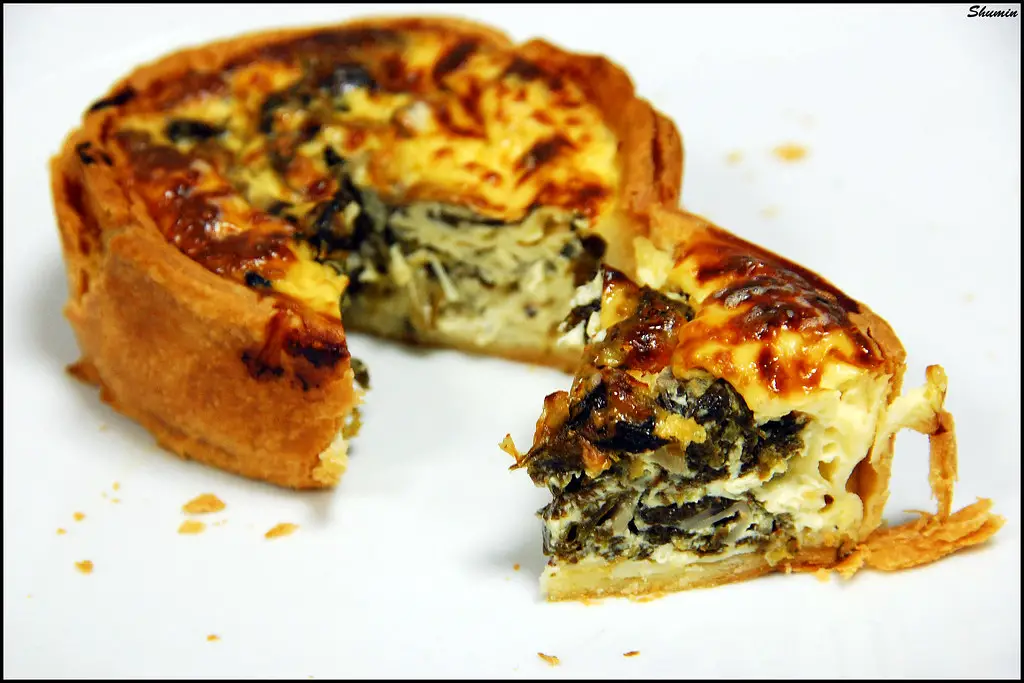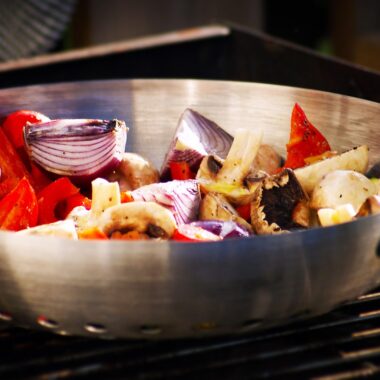Mexican food has a way of captivating taste buds—and hearts—around the world. From the crispy crunch of a taco to the smoky heat of a mole sauce, it’s a cuisine that feels like a celebration in every bite. But what makes Mexican food so amazing? Is it the bold flavors, the colorful presentation, or the centuries of history woven into every dish? The truth is, it’s all of these things and more. Let’s dive into the magic of Mexican cuisine and uncover why it’s beloved by so many.
A Melting Pot of History and Tradition
One of the first things that sets Mexican food apart is its deep historical roots. It’s a culinary story that spans thousands of years, blending indigenous traditions with influences from Spanish colonizers and beyond. Before European contact, the ancient Mesoamerican civilizations—like the Aztecs and Maya—were already cultivating staples like corn, beans, chilies, and tomatoes. These ingredients weren’t just food; they were the backbone of a way of life.
Corn, for instance, was so vital that it was considered sacred, tied to myths of creation and sustenance.
When the Spanish arrived in the 16th century, they brought with them cattle, pigs, dairy, and spices like cinnamon and cloves. This collision of worlds created something entirely new. Take the humble taco, for example. While its origins are debated, some trace it back to indigenous people wrapping food in tortillas made from nixtamalized corn—a process that’s been around for millennia. Add in Spanish-introduced meats like beef or pork, and you’ve got the beginnings of the tacos we know and love today.
This fusion didn’t stop with the Spanish. Over time, African, Caribbean, and even French influences trickled in, especially in regions like Veracruz and Oaxaca. The result? A cuisine that’s as diverse as Mexico’s landscapes, from the deserts of the north to the jungles of the south. Every dish tells a story of adaptation, resilience, and creativity—a history you can taste.
The Ingredients: Simple Yet Extraordinary
At its core, Mexican food is built on ingredients that are deceptively simple but endlessly versatile. Corn, beans, chilies, tomatoes, avocados—these are the building blocks of a flavor empire. What makes them amazing isn’t just their taste but how they’re used to create something greater than the sum of their parts.
Corn is the star of the show. Ground into masa for tortillas, tamales, and gorditas, it’s the foundation of countless dishes. The nixtamalization process—where corn is soaked and cooked in an alkaline solution—unlocks nutrients and gives it that distinctive, earthy flavor. It’s a technique that’s been perfected over generations, turning a humble grain into a culinary icon.
Then there’s the chili pepper, the heartbeat of Mexican cuisine. With over 100 varieties grown in Mexico—like the smoky chipotle, the fiery habanero, or the fruity ancho—chilies bring heat, depth, and personality to every dish.
They’re not just about spice; they’re about balance. A good salsa or mole uses chilies to layer flavors, pairing heat with sweetness, smokiness, or even a touch of bitterness.
Tomatoes and tomatillos add brightness and tang, while avocados bring creamy richness—think guacamole, a dish so perfect it’s practically a religion. Beans, whether black, pinto, or refried, offer earthy comfort. And don’t forget the herbs and spices: cilantro for freshness, epazote for a wild, pungent kick, and cumin for warmth. These ingredients don’t just coexist; they dance together, creating harmony in every bite.
Flavors That Pop
If there’s one word to describe Mexican food, it’s vibrant. The flavors are bold, unapologetic, and downright addictive. There’s a reason why a bite of al pastor—marinated pork cooked on a spit, topped with pineapple—can make your eyes roll back in delight. It’s the interplay of sweet, savory, and spicy that hits every corner of your palate.
Mexican cuisine thrives on contrast. Take pozole, a hearty stew of hominy and meat (often pork), garnished with radishes, cabbage, lime, and chili. It’s rich yet refreshing, spicy yet soothing. Or consider enchiladas, tortillas stuffed with chicken or cheese, drenched in a sauce that might be green, red, or dark with mole. Each version offers a different adventure—tangy tomatillo, fiery chili, or the complex, chocolate-tinged depth of mole poblano.
And then there’s the street food. Tacos, tamales, elotes (grilled corn slathered with mayo, cheese, and chili powder)—these are handheld bursts of joy. They’re messy, informal, and packed with flavor, proving that the best food doesn’t need a fancy setting to shine. It’s this fearless approach to taste that makes Mexican food so irresistible. It’s not afraid to punch you in the mouth with spice or soothe you with a warm tortilla. It’s emotional, it’s alive, and it’s impossible to ignore.
Regional Diversity: A Country of Cuisines
Mexico isn’t just one flavor profile—it’s a tapestry of regional styles, each with its own personality. Travel from coast to coast, and you’ll see how geography, climate, and culture shape the food.
In the north, where ranching dominates, you’ll find hearty dishes like carne asada—grilled beef served with tortillas and salsa—and flour tortillas instead of corn. Head to the Yucatán Peninsula, and you’re in Mayan territory, where cochinita pibil (slow-roasted pork marinated in achiote and sour orange) reigns supreme, wrapped in banana leaves for a smoky, tender finish.
Oaxaca, often called the “land of seven moles,” is a paradise of complex sauces made with chilies, nuts, seeds, and sometimes chocolate. Puebla gave us mole poblano and chiles en nogada, a dish of stuffed peppers draped in walnut sauce and sprinkled with pomegranate seeds—a patriotic nod to Mexico’s flag. On the coasts, seafood takes center stage: ceviche in Baja, shrimp aguachile in Sinaloa, or fish zarandeado grilled over an open flame.
This diversity means there’s always something new to discover. Mexican food isn’t static; it’s a living, breathing reflection of the people who make it. No two states—or even two households—do it quite the same way.
The Art of Technique
Beyond ingredients and flavors, Mexican food amazes with its techniques. Many of these methods are ancient, passed down through generations, and they’re what give the cuisine its soul.
Take the tortilla. Making it by hand—kneading masa, pressing it flat, and cooking it on a comal (a flat griddle)—is an art form. It’s simple, yet it requires skill to get that perfect texture: soft but sturdy, with a faint char. Tamales, too, are a labor of love. Steaming corn husks filled with masa and meat or cheese takes time and patience, often a family affair during holidays.
Salsas are another masterpiece. Whether it’s a raw pico de gallo or a roasted salsa negra, the process of grinding ingredients—historically with a molcajete (a stone mortar and pestle)—coaxes out flavors you can’t get from a blender. And mole? It’s a symphony of 20 or more ingredients, toasted, ground, and simmered for hours. The effort shows in every spoonful.
These techniques aren’t just practical; they’re cultural. They connect people to their ancestors, to the land, and to each other. That’s part of what makes eating Mexican food feel so special—it’s a taste of history and human hands.
A Feast for the Senses
Mexican food isn’t just about taste—it’s a full sensory experience. The colors alone are a feast for the eyes: the red of a salsa roja, the green of guacamole, the golden-brown of a freshly fried churro. Dishes are often garnished with flair—bright radishes, snowy cotija cheese, or a sprinkle of cilantro—making every plate a work of art.
The sounds are just as enticing. The sizzle of carne asada on the grill, the rhythmic slap of hands shaping tortillas, the pop of oil frying chiles rellenos—it’s a soundtrack of anticipation. And the smells? Warm spices, roasting chilies, fresh lime—aromas that pull you in and make your stomach growl.
Even the texture adds to the magic. Crunchy tostadas give way to creamy beans, chewy masa meets tender barbacoa, and silky sauces coat every bite. It’s a cuisine that demands you feel it as much as you taste it.
A Culture of Celebration
Perhaps the most amazing thing about Mexican food is its connection to community and celebration. Food in Mexico isn’t just fuel—it’s a way to bring people together. Think of Día de los Muertos, where tamales and pan de muerto honor the departed, or Christmas posadas with steaming mugs of champurrado and plates of pozole. Even a casual taco night with friends carries that spirit of togetherness.
Street vendors, taquerías, and family kitchens are the heartbeat of this culture. It’s food made with love, shared with joy, and savored without pretense. That accessibility—combined with its richness—makes Mexican cuisine feel like a warm hug from a friend.
Why It Wins Hearts Worldwide
Mexican food’s global appeal isn’t hard to understand. It’s flavorful, versatile, and endlessly adaptable. From fast-food chains to Michelin-starred restaurants, it’s been embraced and reinterpreted without losing its essence. A taco can be a $1 street snack or a gourmet creation with truffles—either way, it’s still a taco, and it’s still delicious.
It also speaks to something universal: the joy of eating. Mexican food doesn’t hold back. It’s generous with its portions, its spices, and its spirit. It invites you to dig in, get messy, and enjoy the ride. In a world of beige diets and cautious flavors, Mexican cuisine is a defiant burst of life.
The Final Bite
So why is Mexican food so amazing? It’s the history that simmers in every pot, the ingredients that burst with flavor, the techniques that honor tradition, and the culture that celebrates life. It’s a cuisine that’s survived conquest, adapted to change, and emerged stronger, tastier, and more vibrant than ever. Whether you’re biting into a taco al pastor on a bustling street corner or savoring a bowl of mole at a family table, you’re tasting something extraordinary—a legacy of flavor that’s as timeless as it is delicious. That’s the magic of Mexican food, and it’s why it’ll keep winning hearts for generations to come.

















